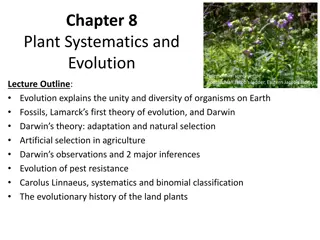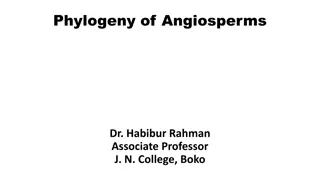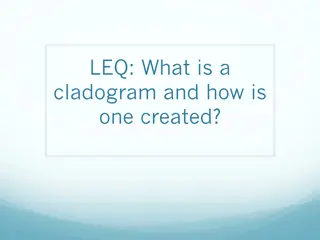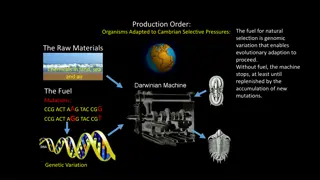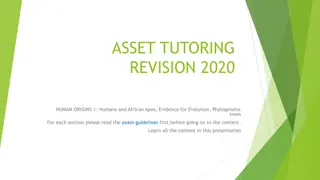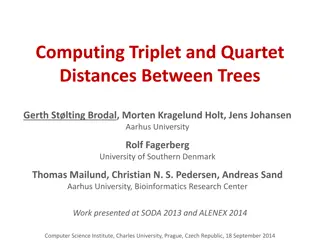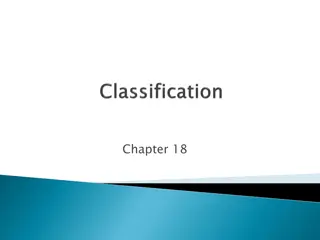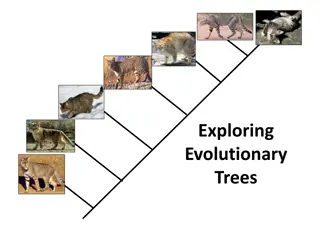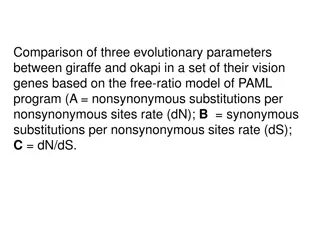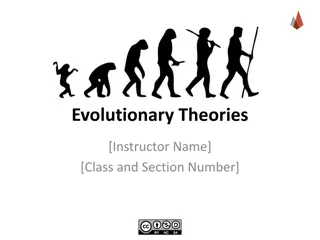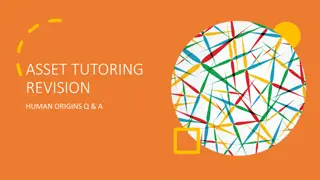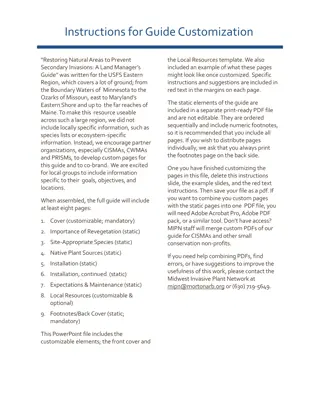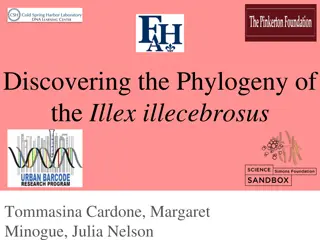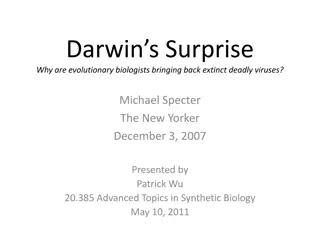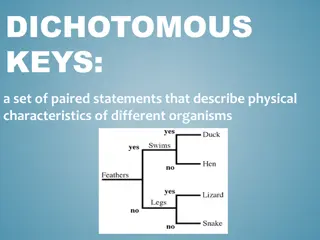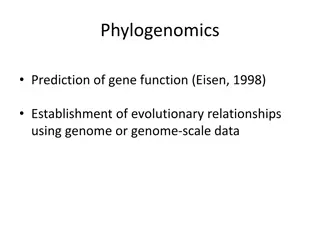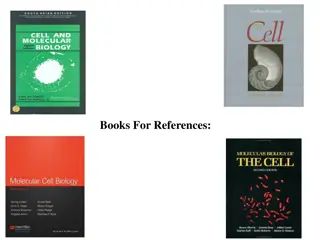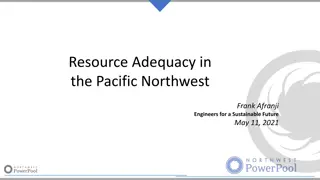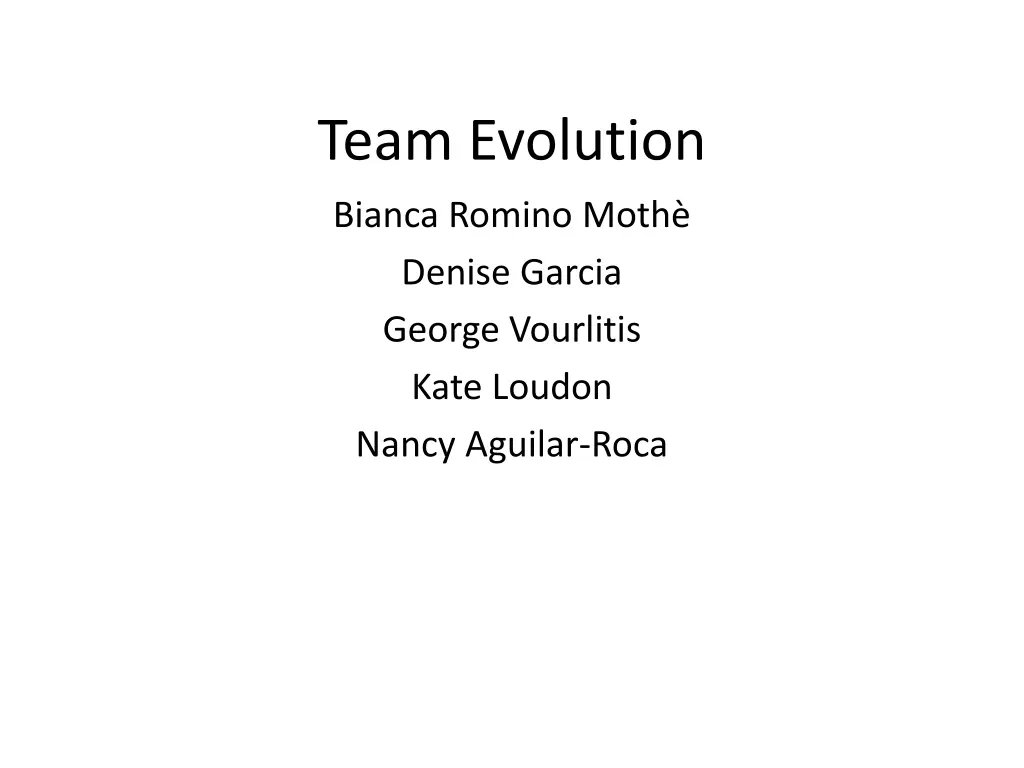
Evolution Learning Unit with Team Evolution and Teachable Tidbits
Explore evolutionary mechanisms, genetic diversity, and the role of variation in evolution with Team Evolution. Engage in formative assessments, graphing allele frequencies, and discussions on genetic diversity trends over generations.
Download Presentation

Please find below an Image/Link to download the presentation.
The content on the website is provided AS IS for your information and personal use only. It may not be sold, licensed, or shared on other websites without obtaining consent from the author. If you encounter any issues during the download, it is possible that the publisher has removed the file from their server.
You are allowed to download the files provided on this website for personal or commercial use, subject to the condition that they are used lawfully. All files are the property of their respective owners.
The content on the website is provided AS IS for your information and personal use only. It may not be sold, licensed, or shared on other websites without obtaining consent from the author.
E N D
Presentation Transcript
Team Evolution Bianca Romino Moth Denise Garcia George Vourlitis Kate Loudon Nancy Aguilar-Roca
Teachable Unit for Evolution Learning goals Understand the role of variation in evolution To understand the role of evolutionary processes across all levels of biological organization Apply the scientific method to evolutionary processes
From our previous classes, you should know. 1) Evolutionary mechanisms including Natural selection Genetic drift 2) How to calculate and convert between Allelic frequencies Genotypic frequencies
Teachable Tidbit Instructions (formative assessment for goal 1) Each cup has 20 marked and 20 plain seeds representing an allelic frequency of 50% each in our gene pool. 1) Without looking, randomly remove two alleles from the cup (=1 individual). Record the identity of the alleles on the data sheet. Put the alleles back into the cup. For blue groups Repeat step 1 until you have data for a total of 20 individuals. These 20 individuals represent the next generation. For red groups Repeat step 1 until you have data for a total of 5 individuals. These 5 individuals represent the next generation. 2) 3) Calculate the percentage of each allele in this new generation and record those numbers. Use the new calculated percentages to restock the population with 40 alleles (20 individuals). 4) Repeat steps 1 to 3 two additional times to simulate 3 generations. Be sure to record the data for each generation. 5) Graph the change in allele frequency over time for your population and put your graph on the board.
Teachable Tidbit Discussion With your group, discuss the following questions: 1. What happened to genetic diversity during the 3 generations? 2. In what ways were the results from the blue and red tables similar or different? 3. Given these trends, hypothesize what might happen to genetic diversity over multiple generations. 4. Discuss an underlying evolutionary mechanism for the observed results.
Goal 1: Understand the role of variation in evolution Outcomes Summative assessment Formative assessment Students will be able to graph the effects of natural selection on a trait over time A population is split so that population A is larger than population B. Compare and contrast the different potential evolutionary forces on these populations. Today s activity. Students will be able to compare and contrast evolutionary mechanisms (e.g. natural selection vs genetic drift).
Goal 2: To understand the role of evolutionary processes across all levels of biological organization Outcome Summative assessment Formative assessment Students will be able to predict how a mutation that changes protein function may affect a population. In the original population, there were 3 alleles for a protein associated with desiccation resistance. Predict changes in protein frequency that would result from global warming after 100 generations. (see figure). Modification of today s activity. Experimental Data Protein frequency after split
Goal 3: Apply the scientific method to evolutionary processes Outcome Summative assessment Formative assessment Given the geographical distribution of species, students will be able to formulate a hypothesis that explains how this occurred. Hypothesize a mechanism by which these two populations can become two different species. Brilliant idea to follow ..
Thanks!! Clarissa & Summer Institute The Evergreen State College Chris Tubbs for helping us become an awesome group and calling us out on all of our anti-group behaviors. Summer Institute participants for their feedback.

